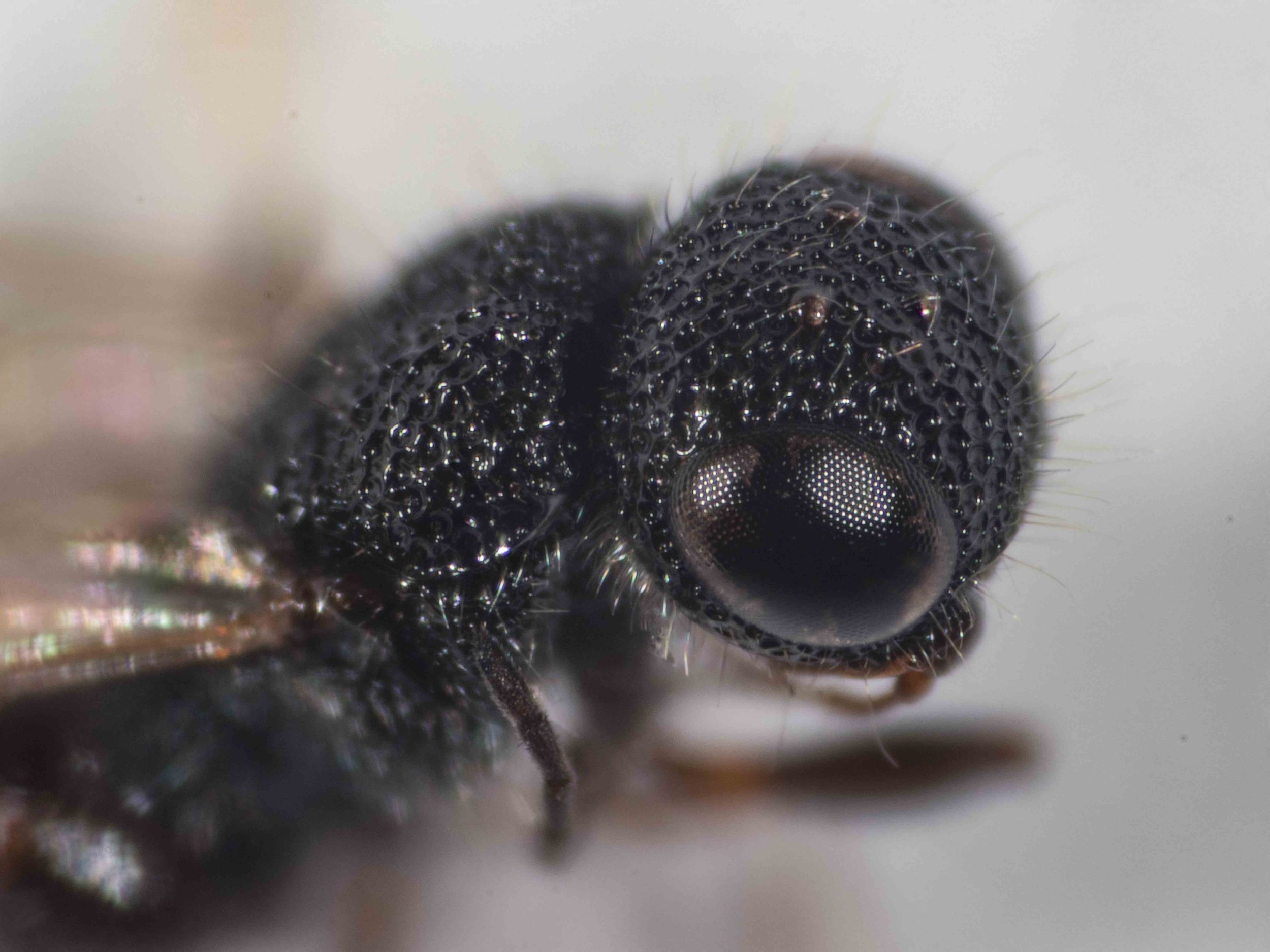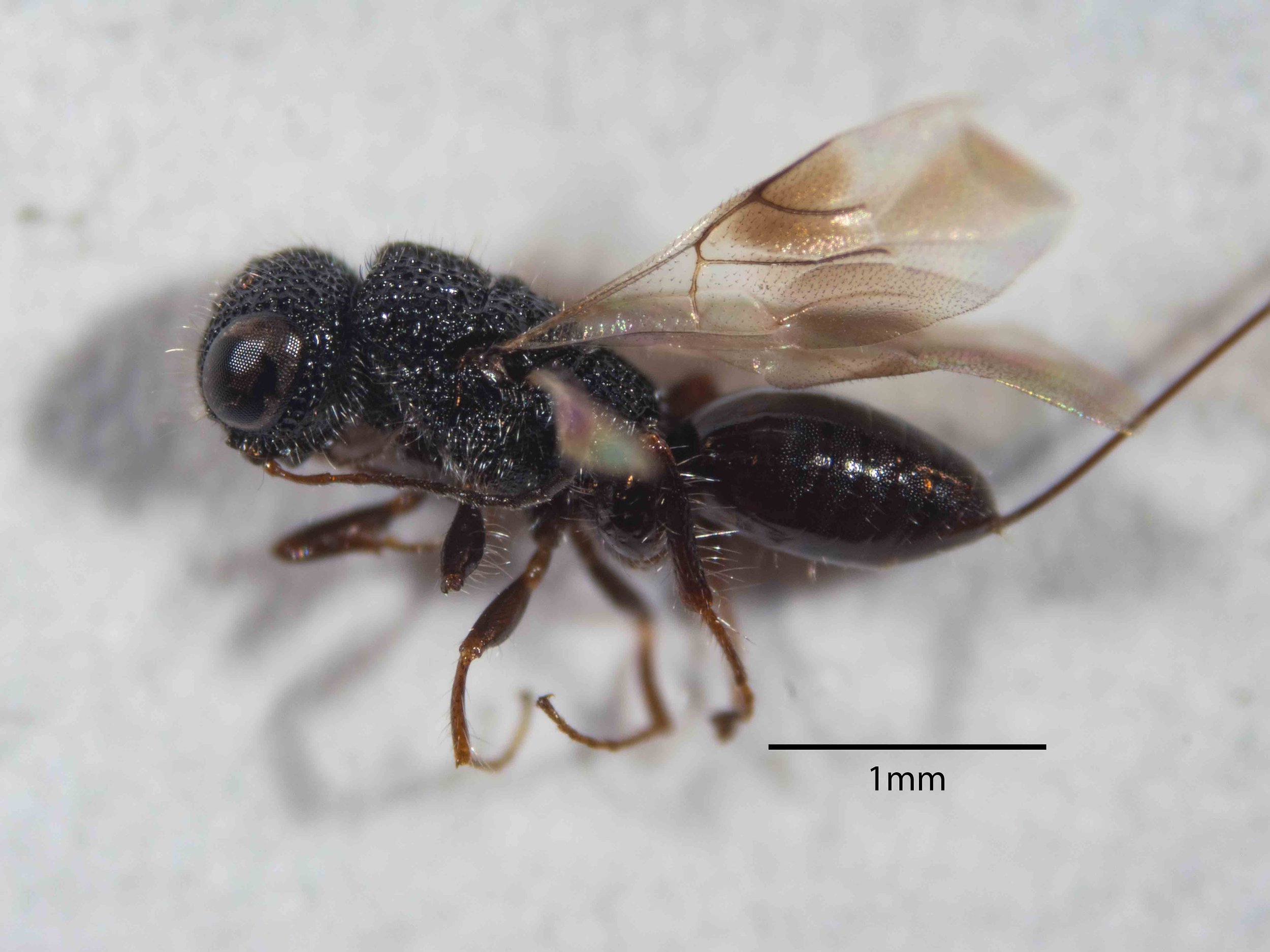
very small body length
Excluding the antennae & ovipositor, she is less than 3mm in length. Species in the minuta group are all small to minute, with most specimens being under 4mm long. This is also true for some species from other groups, but it immediately rules out some of the most commonly collected Megalyra such as M. fascipennis, M. rufipes, & M. shuckardi.

costa of forewing absent
The complete absence of a costal vein in the forewing points to the minuta species group.
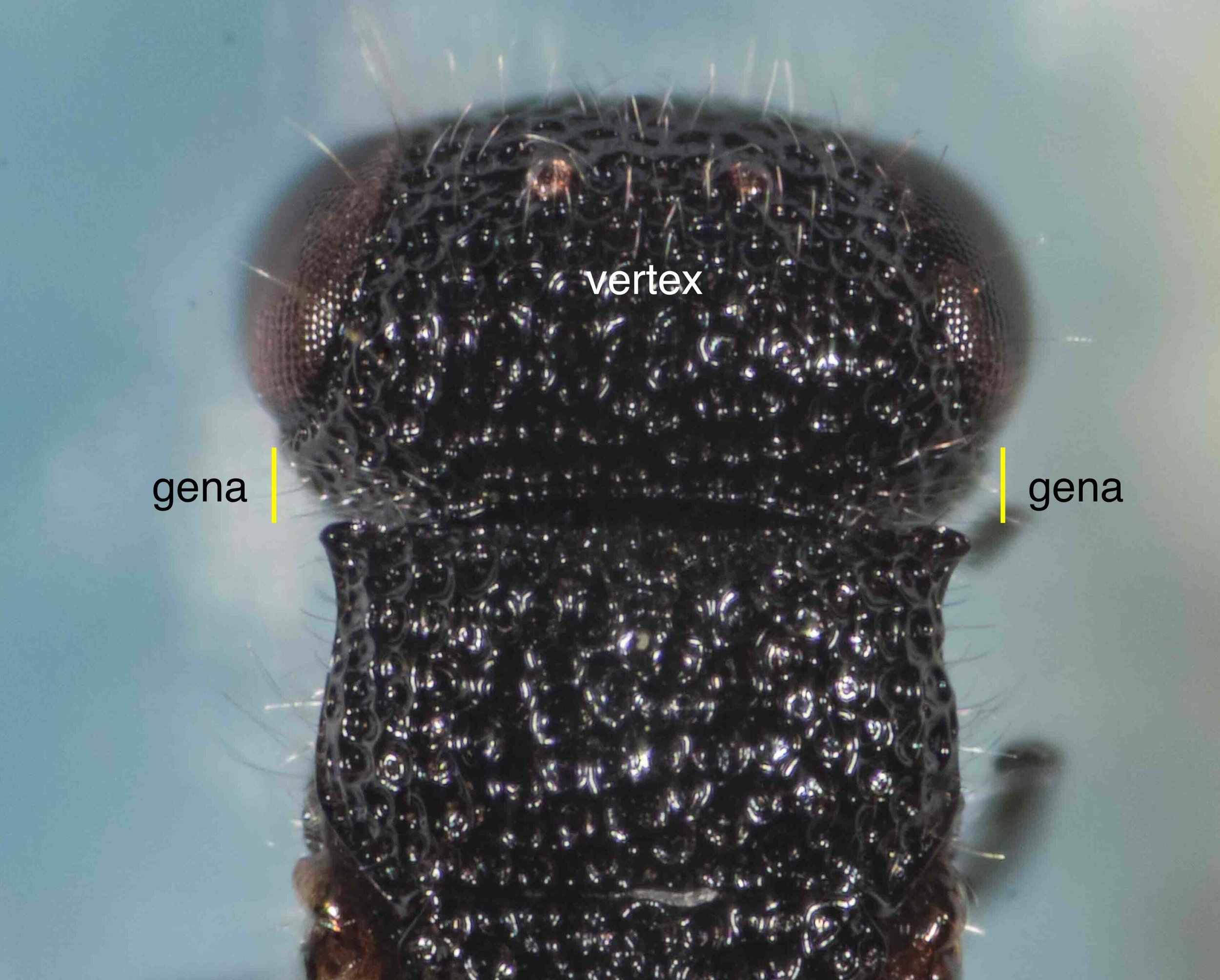
short genae
Another feature distinguishing the minuta species group from other Megalyra is the distance between the eyes and the back of the head. That is, in dorsal view the genae are shorter than the compound eye.
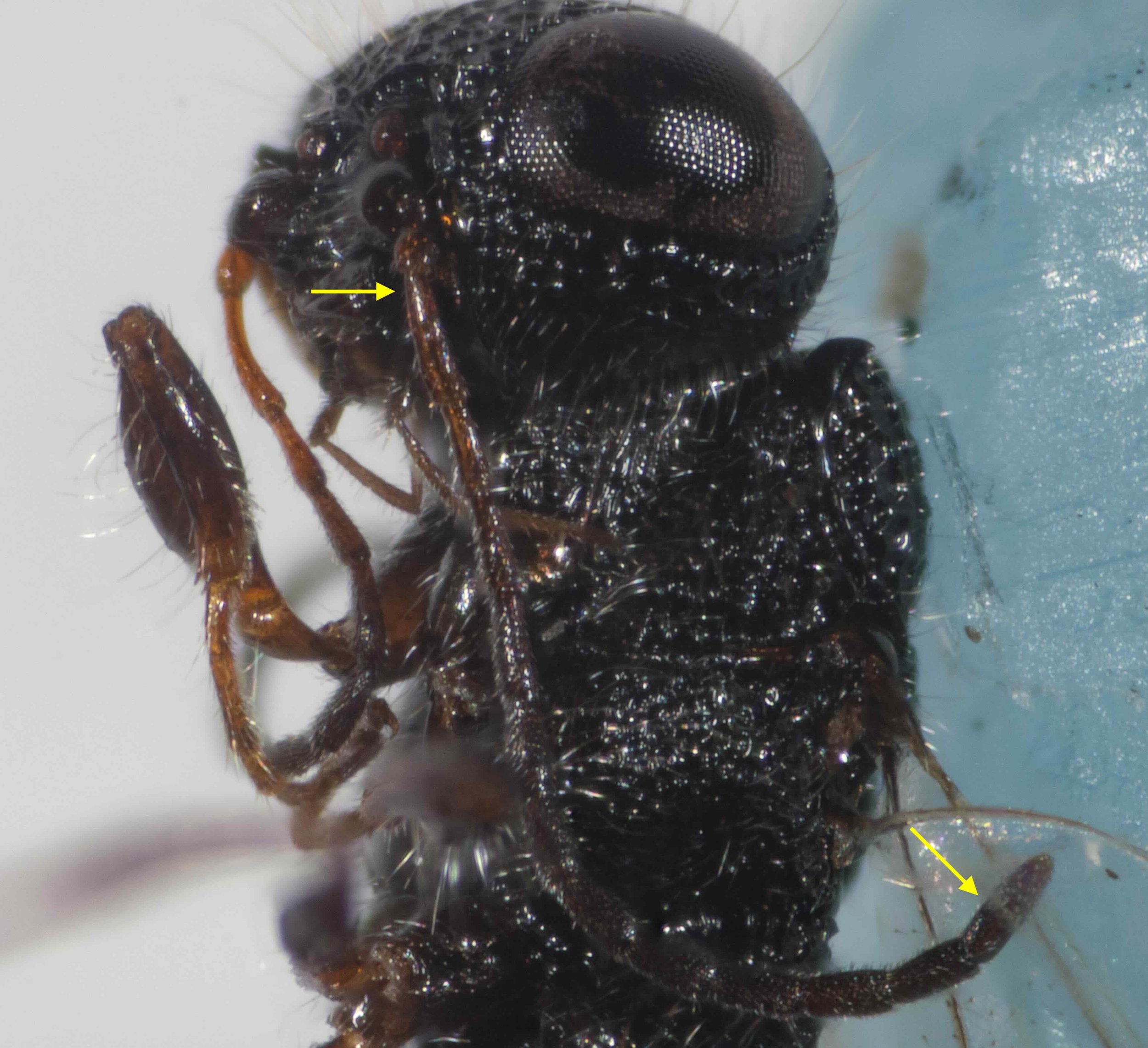
flagellum slightly clavate
One further feature specific to the minuta species group is antennal shape … the apical segment being about twice as wide as the basal segment (see arrows).
Note also the 12 flagellar segments … a feature of all Megalyridae.
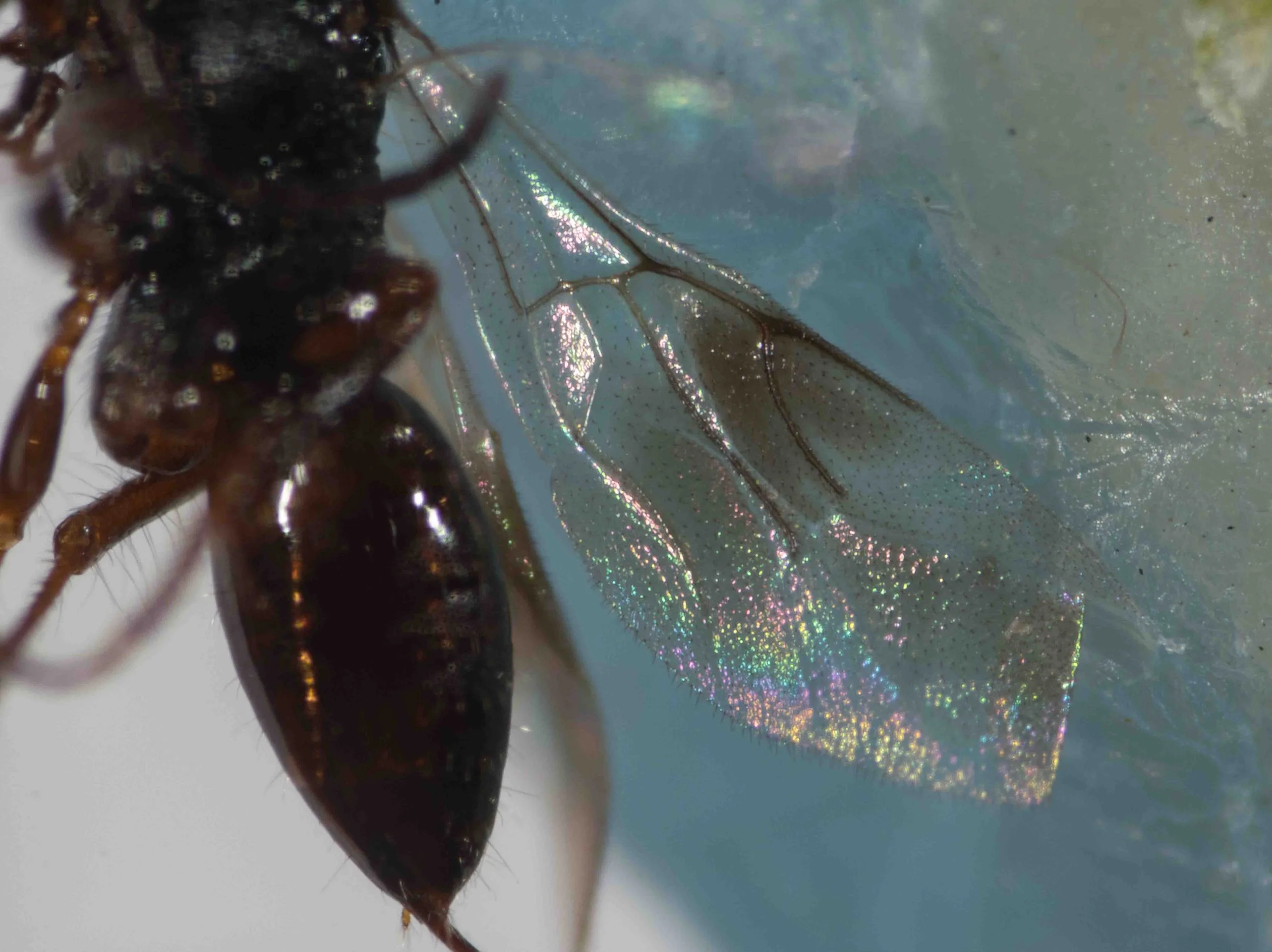
forewing with dark medial blotch/band
This feature distinguishes M. lilliputiana from all other species in the minuta species group. And it is quite unambiguous, visible even in the field photos of the live insect.
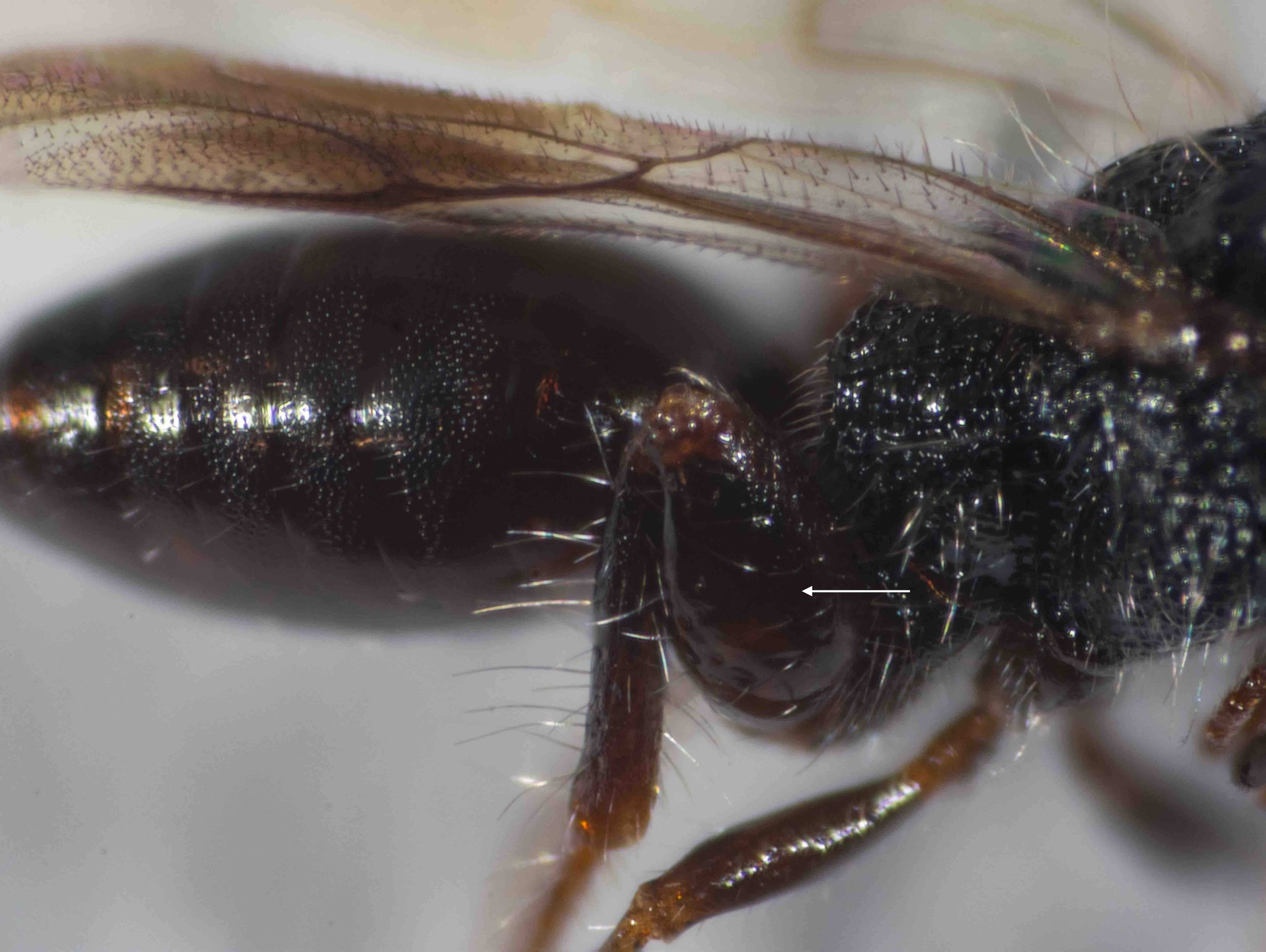
leg colour
Legs largely black, hind femora (arrow) entirely black. Many species in the minuta group have orange or yellow-brown legs. The colour of the hind femora is particularly discriminating.
Shaw lists this among the diagnostic features for the species, in combination a forewing medial band & glabrous ovipositor (Shaw, 1990, p. 1026).
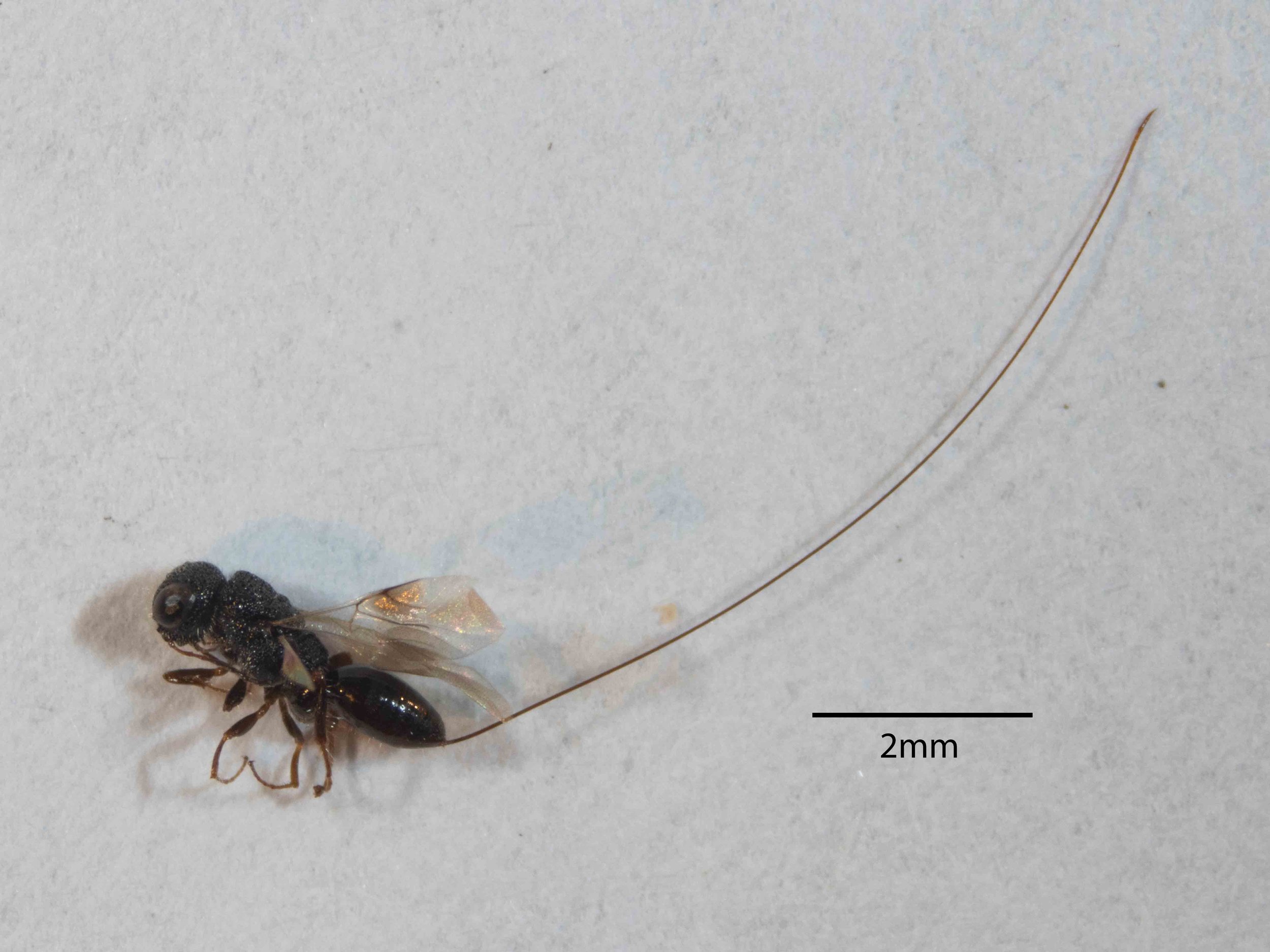
ovipositor length
The relative length of the ovipositor to the body is ~3.1 …. which is perfectly in range for M. lilliputiana (2.38-3.67) but much shorter than for the similar species M. minuta (5.72-7.65).
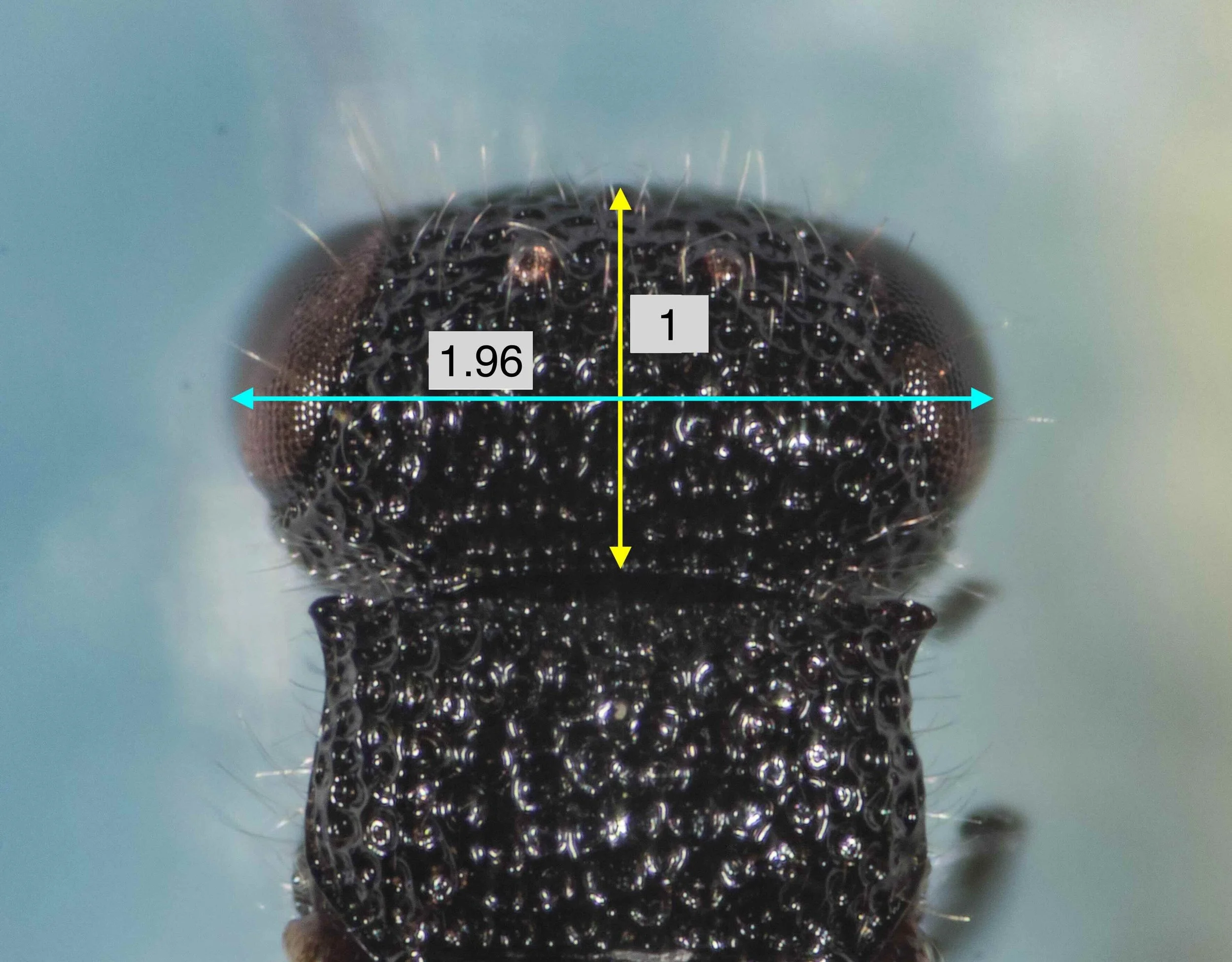
head shape
Strongly transverse, as are all in the minuta species group. The width/length ratio is 1.96, which is within range for M. lilliputiana (1.48-2.03)
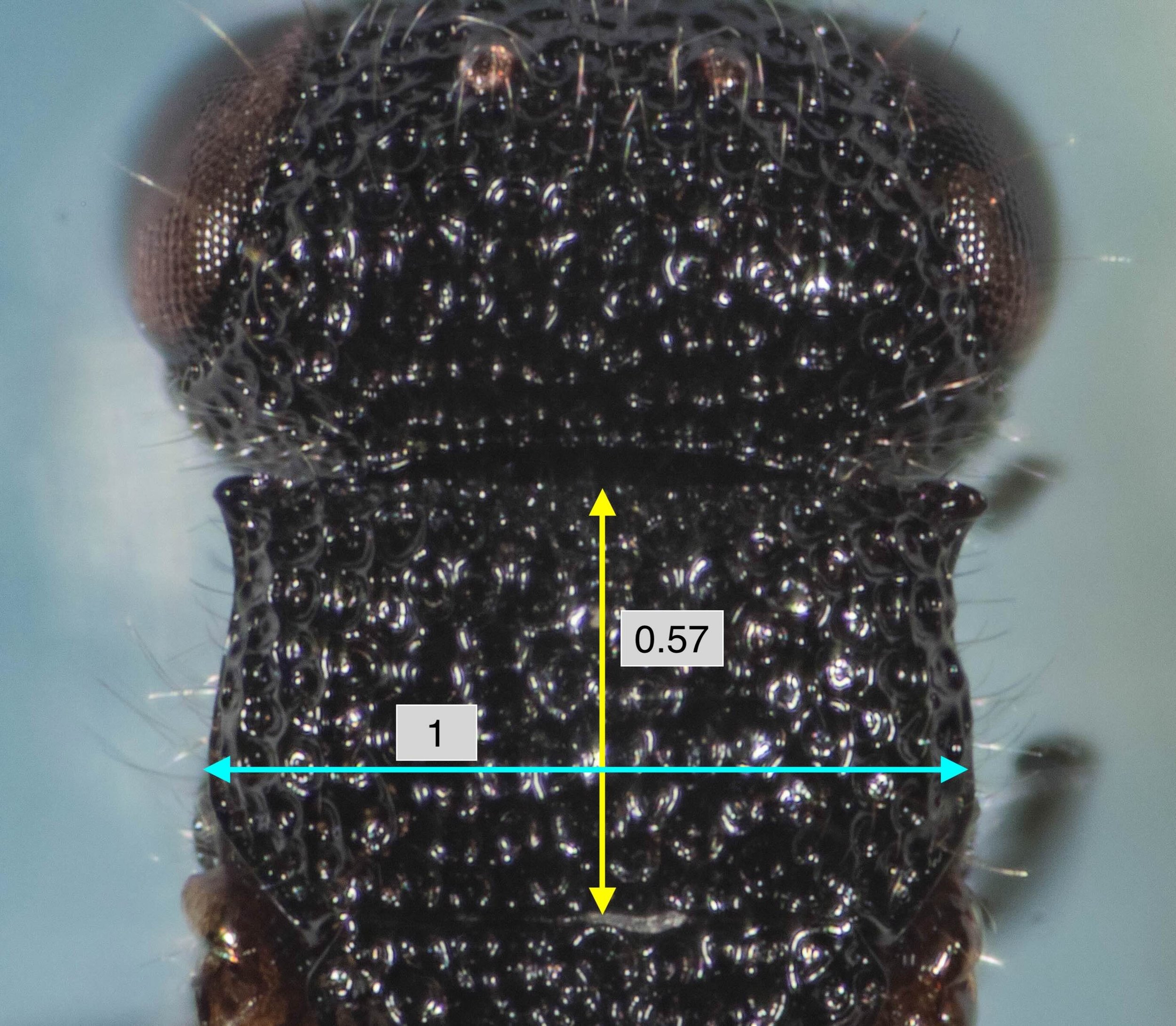
mesoscutum shape & texture
The length/width = 0.57, which is within known range for M. lilliputiana females (0.51-0.61).
Sculpturing matches Shaw’s description for M. lilliputiana … “deeply and evenly foveate-reticulate; median sulcus absent, obscured by foveae” (1990, p. 1027).
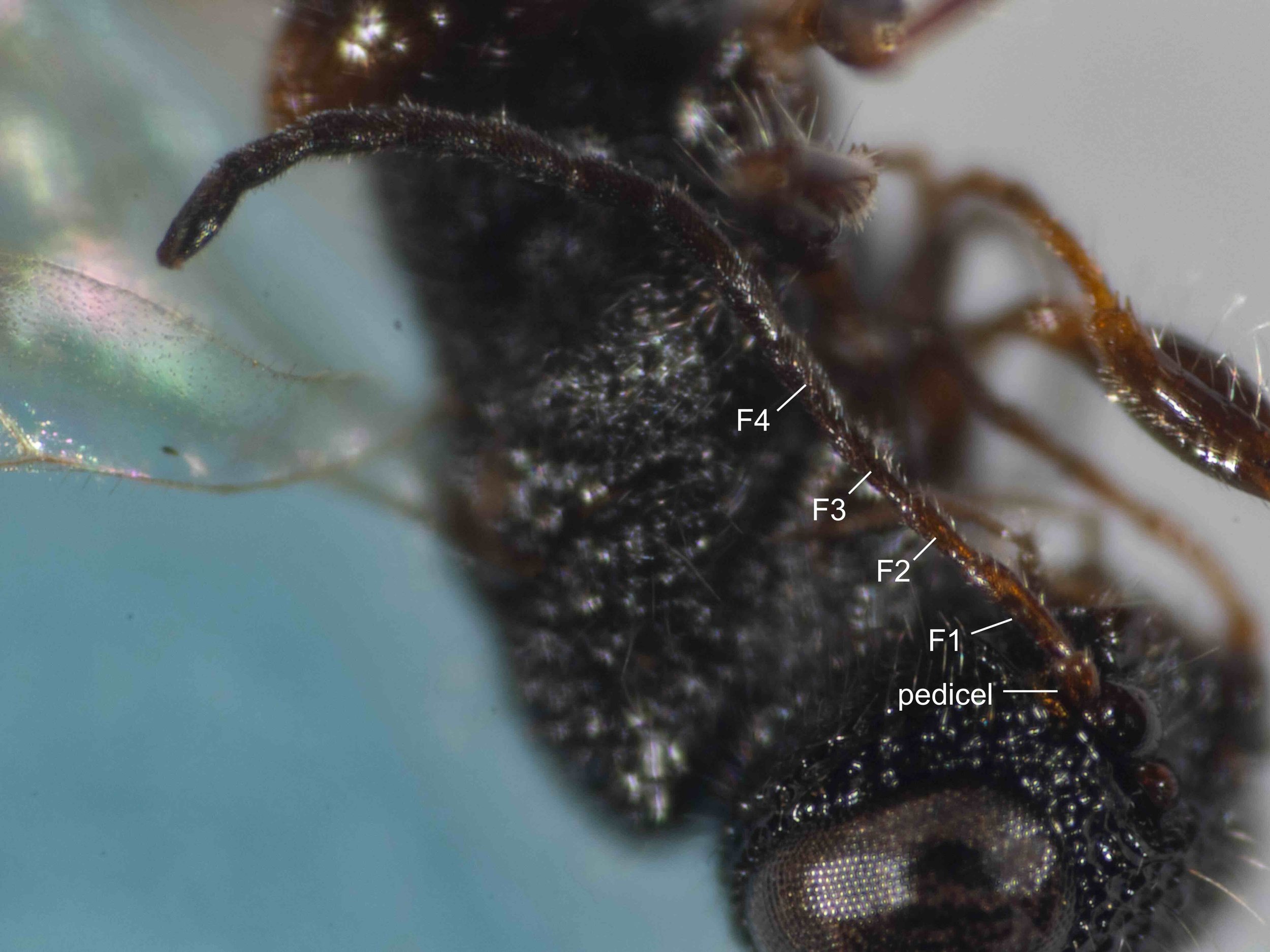
colour of antennae
Antennae black, except pedicel, F1 & sometimes F2-3.

hindwing venation
The sclerotised segment of Rs short, the apical ¾ spectral. This is the condition for most Megalyra, and perhaps all in the minuta species group.

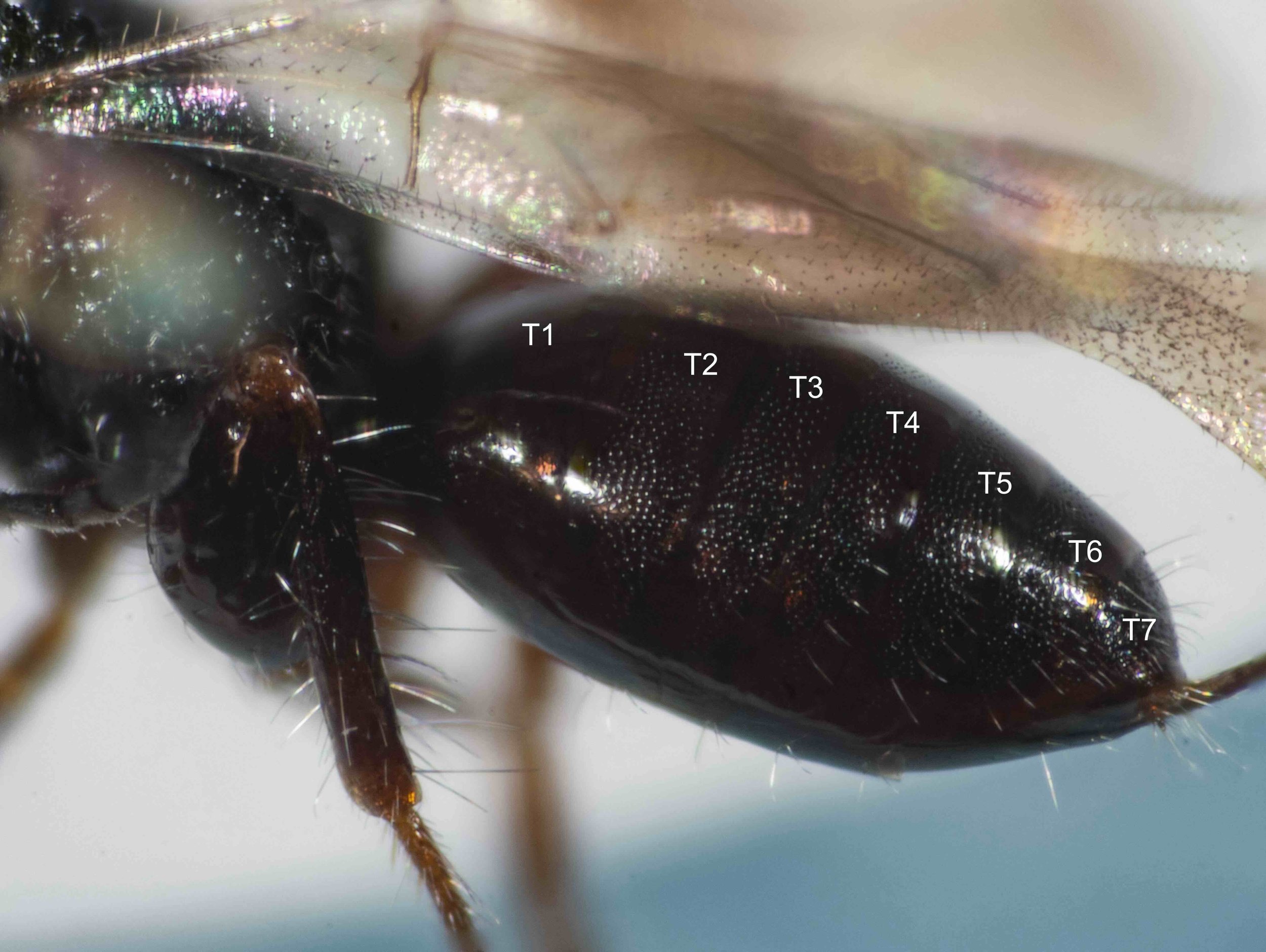
metasoma microsculpture
The metasoma of Megalyra is described by Shaw (1990) as follows:
“ Elongate, subcylindrical, not compressed: T2-T7 often with some microsculpture, varying from faintly shagreened to densely punctate, otherwise mostly smooth.” (p 1008).
Shaw’s description of M. lilliputiana is as follows:
“T1 and sterna smooth; T2-T7 densely punctate except narrrow smooth apical margins of T2-T6.” (p 1027).
The microsculpture of T2 is also referenced in the final step of the key, distinguishing M. lilliputiana from M. minuta:
“Tergum 2 entirely coarsely punctured except for a narrow smooth apical margin ….. M. lilliputiana
Tergum 2 imbricate on basal ½, entire apical ½ smooth ….. M. minuta.” (Shaw 1990, p. 1013)

